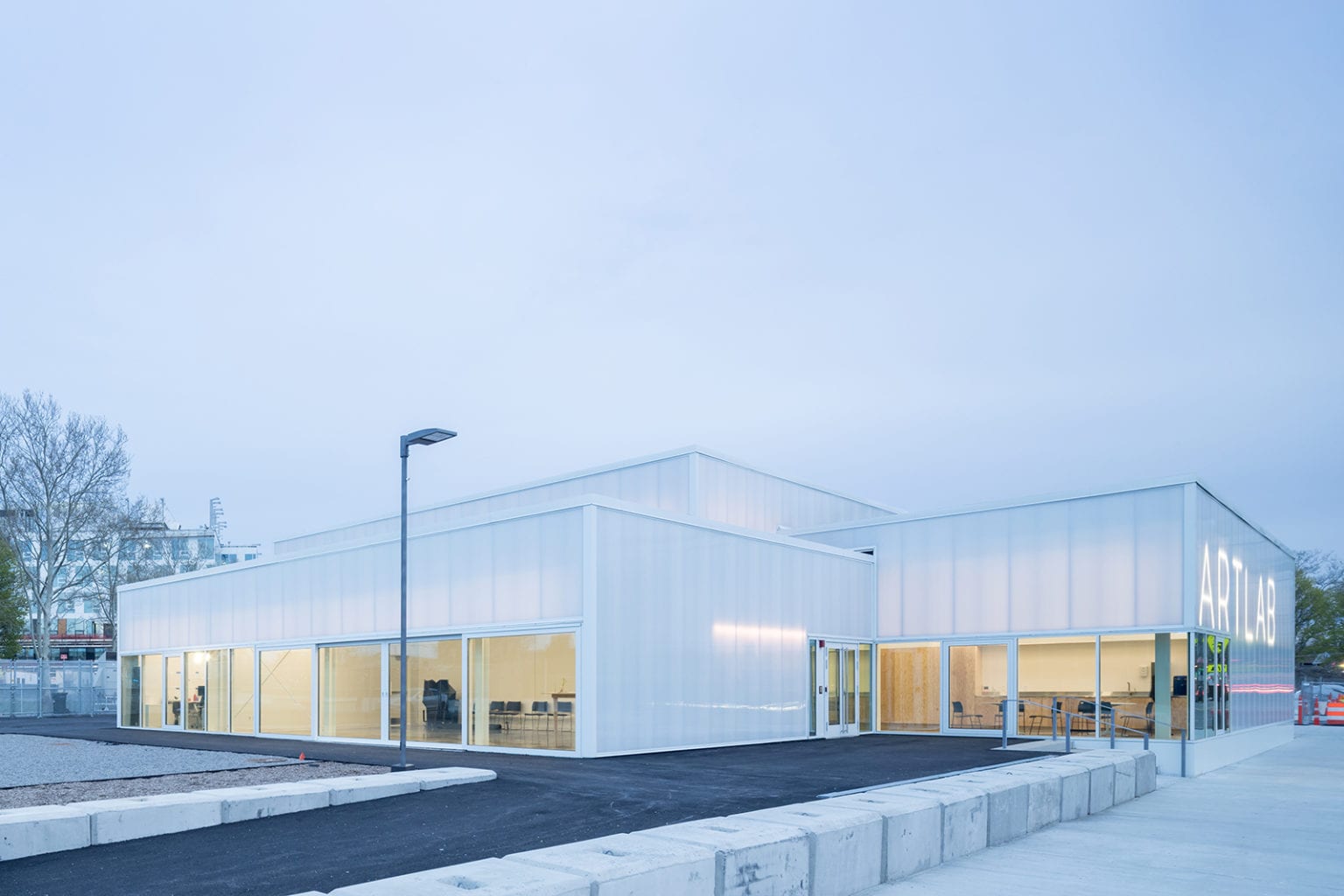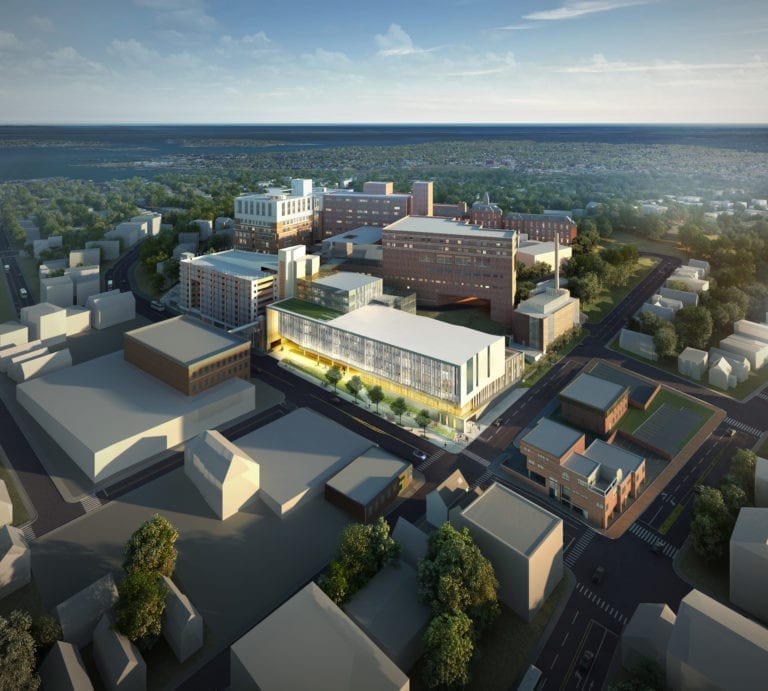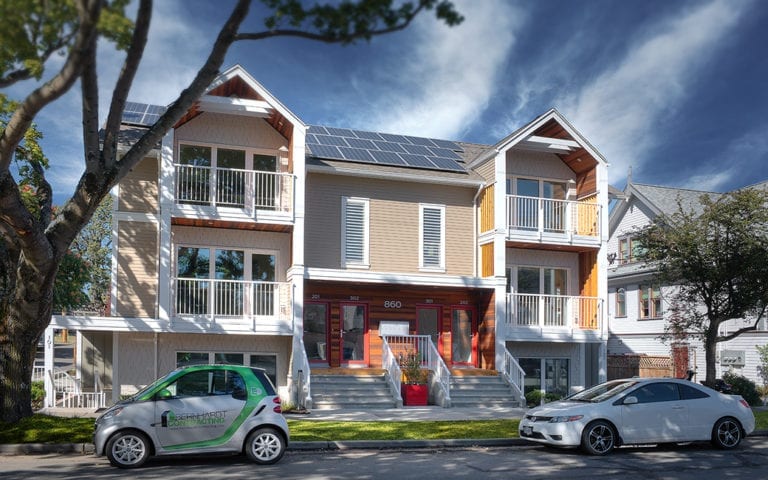The ArtLab at Harvard University will serve as a hub of art innovation for the Harvard community. Located on the university grounds, the ArtLab will provide a setting for students and artists to bring their projects to life. Along with artist studios and offices, the ArtLab will include dedicated space for exhibitions, workshops, and video and sound engineering. The project has targeted near-net-zero energy performance goals.
Based on our previous experience with Harvard’s Green Building Services, we were selected to provide building enclosure commissioning (BECx) on a team that included European-based architect Barkow Leibinger Architekten. Staff from both our Boston and Toronto offices worked together to deliver the BECx process for this high-performance building project.
Our BECx process at ArtLab began early in the design phase. We reviewed and commented on a selection of assemblies to align with the university’s energy efficiency goals. The design process produced an enclosure largely comprised of a glazed aluminum curtain wall and translucent polycarbonate panel systems. The polycarbonate system presented unique challenges with respect to elevated airtightness performance in light of the energy performance goals.
During the pre-construction phases, our team identified performance risk factors based on previous experience. We recommended mock-up testing of the polycarbonate system at the manufacturer’s workshop to verify the performance claims. Members of our team witnessed the testing, identified system deficiencies, and subsequently supported the project team with recommendations to improve the air leakage performance. The testing results provided Harvard with assurance that the enclosure would achieve the desired outcome when constructed.
Our team found that the transition detailing between the polycarbonate panel system and the adjacent wall type required atypical air barrier detailing with preformed silicone sheets. During the design phase, we worked with the project stakeholders to identify and resolve constructability and performance concerns with the proposed transition between the wall and roof assemblies. Our team coordinated and supervised whole-building air leakage testing on the completed enclosure, which demonstrated an airtightness performance that surpassed the rigorous Passive House standard.
The ArtLab is nearly complete, and Harvard is in the process of occupying the building. Our team will continue to monitor the building enclosure performance and develop a maintenance schedule for the university. The building enclosure commissioning process has delivered a high-performance building enclosure and helped us foster a positive relationship with the owner.
Images courtesy of Barkow Leibinger and Sasaki © Iwan Baan
Share This Post
Date:
July 20, 2019
Client:
Harvard University Campus Services
Architects:
Barkow Leibinger Architekten, Sasaki Associates
Our Role:
Building Enclosure Commissioning Consultant








